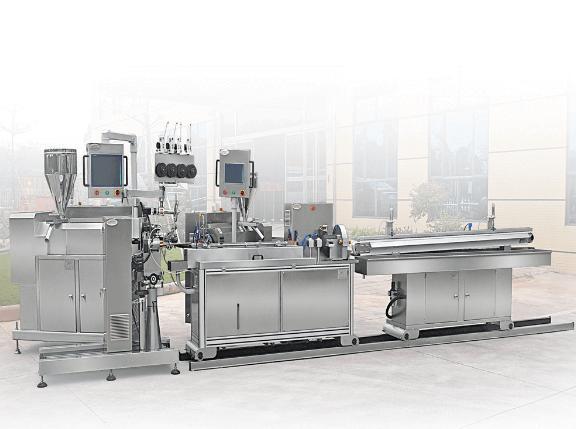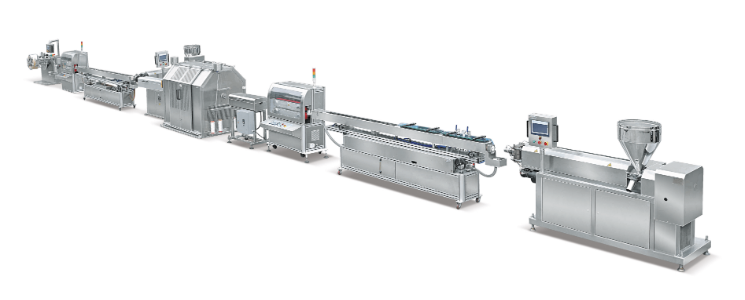
Conceptos básicos de extrusoras y máquinas de preparación de compuestos
Las extrusoras y las máquinas de preparación de compuestos desempeñan un papel fundamental en la industria de equipos médicos, ya que permiten la producción de una amplia gama de dispositivos y componentes esenciales. En este artículo, exploraremos los conceptos básicos de las extrusoras y las máquinas de preparación de compuestos, sus funciones, tipos, aplicaciones y la importancia del control de calidad en el proceso de fabricación de equipos médicos.
¿Qué son las extrusoras?
Las extrusoras son máquinas que se utilizan para dar forma y procesar diversos materiales hasta obtener un perfil continuo con una forma transversal específica. En la industria de equipos médicos, las extrusoras son fundamentales para producir componentes como tubos, catéteres y revestimientos de dispositivos. Dos tipos comunes de extrusoras que se utilizan en la fabricación de equipos médicos son las extrusoras de un solo tornillo y las de doble tornillo.
Las extrusoras de un solo tornillo son el tipo más simple y común. Constan de un cilindro calentado, un tornillo giratorio, bandas calefactoras y una matriz. El tornillo gira dentro del cilindro, empujando el material hacia adelante, fundiéndolo y obligándolo a pasar a través de la matriz para crear la forma deseada. Por otro lado, las extrusoras de doble tornillo ofrecen capacidades de mezclado mejoradas y se utilizan a menudo para procesos de fabricación de dispositivos médicos más complejos.
Las extrusoras de un solo tornillo son el tipo más simple y común. Constan de un cilindro calentado, un tornillo giratorio, bandas calefactoras y una matriz. El tornillo gira dentro del cilindro, empujando el material hacia adelante, fundiéndolo y obligándolo a pasar a través de la matriz para crear la forma deseada. Por otro lado, las extrusoras de doble tornillo ofrecen capacidades de mezclado mejoradas y se utilizan a menudo para procesos de fabricación de dispositivos médicos más complejos.
Comprensión de las máquinas de compuestos
Las máquinas de preparación de compuestos se utilizan para mezclar varios materiales, aditivos o colorantes para crear formulaciones de polímeros personalizadas. En la industria de equipos médicos, las máquinas de preparación de compuestos son esenciales para producir materiales con propiedades y características específicas requeridas para varios dispositivos médicos. Dos tipos comunes de máquinas de preparación de compuestos que se utilizan son las máquinas de preparación de compuestos por lotes y las máquinas de preparación de compuestos continuos.
Las máquinas de preparación de compuestos por lotes mezclan una cantidad predeterminada de materiales en una cámara cerrada para lograr la fórmula deseada. Las máquinas de preparación de compuestos continuos, como sugiere su nombre, proporcionan un proceso continuo en el que los materiales se introducen en una cámara de mezcla, se mezclan y luego se peletizan para su posterior procesamiento.
Las máquinas de preparación de compuestos por lotes mezclan una cantidad predeterminada de materiales en una cámara cerrada para lograr la fórmula deseada. Las máquinas de preparación de compuestos continuos, como sugiere su nombre, proporcionan un proceso continuo en el que los materiales se introducen en una cámara de mezcla, se mezclan y luego se peletizan para su posterior procesamiento.
Aplicaciones de extrusoras y máquinas de preparación de compuestos en la industria de equipos médicos
Las extrusoras y máquinas de compuestos encuentran aplicaciones de amplio espectro en la industria de equipos médicos, permitiendo la producción de dispositivos y componentes críticos.
Los procesos basados en extrusión se utilizan en la producción de tubos y catéteres, donde los polímeros de grado médico se extruyen en formas y dimensiones precisas. Las extrusoras también desempeñan un papel importante en la aplicación de recubrimientos a los dispositivos médicos, lo que garantiza la biocompatibilidad, la lubricidad y las propiedades de elución de fármacos. Además, la extrusión de filamentos mediante extrusoras se emplea en el creciente campo de la impresión 3D para la fabricación de implantes y guías quirúrgicas específicos para el paciente.
Las máquinas de preparación de compuestos se utilizan para crear formulaciones de materiales personalizadas para dispositivos médicos, adaptando las propiedades de los polímeros para cumplir con requisitos específicos como flexibilidad, resistencia o biocompatibilidad. También son fundamentales para producir masterbatches de color y aditivos, lo que permite un control preciso sobre la coloración y la incorporación de aditivos como agentes antimicrobianos o materiales radiopacos. Además, las máquinas de preparación de compuestos permiten mezclar diferentes polímeros para producir componentes especializados en la fabricación de equipos médicos.
Control de calidad y consideraciones regulatorias
El control de calidad es de suma importancia en la industria de equipos médicos para garantizar la seguridad y confiabilidad de los productos y el cumplimiento de las normas regulatorias. Los procesos de extrusión y composición deben cumplir con requisitos estrictos para producir materiales y componentes con una calidad constante.
El cumplimiento de las normas de la industria, como la ISO 13485 (Sistemas de gestión de calidad para dispositivos médicos) y las regulaciones de la FDA, es fundamental. Los fabricantes deben cumplir con procedimientos documentados, realizar pruebas rigurosas y mantener la trazabilidad de los materiales durante todo el proceso de producción.
Las medidas clave de control de calidad incluyen la supervisión y el control de parámetros como la temperatura, la presión y la velocidad del husillo durante los procesos de extrusión y composición. Además, la caracterización de los materiales, las pruebas de propiedades mecánicas y las evaluaciones de biocompatibilidad son fundamentales para garantizar la seguridad y el rendimiento de los equipos médicos.
Conclusión
A medida que la industria de equipos médicos continúa evolucionando e innovando, es esencial que los profesionales se mantengan actualizados con las técnicas y los avances más avanzados en tecnologías de extrusión y preparación de compuestos. La investigación y el desarrollo continuos en estas áreas contribuirán a la producción de dispositivos médicos de alta calidad que mejoren la atención al paciente y promuevan las prácticas de atención médica.
Al comprender los fundamentos de las extrusoras y las máquinas de compuestos, los fabricantes y profesionales pueden aprovechar sus capacidades para satisfacer las crecientes demandas de la industria de equipos médicos, mejorando en última instancia los resultados de los pacientes e impulsando la innovación en la atención médica.
Al comprender los fundamentos de las extrusoras y las máquinas de compuestos, los fabricantes y profesionales pueden aprovechar sus capacidades para satisfacer las crecientes demandas de la industria de equipos médicos, mejorando en última instancia los resultados de los pacientes e impulsando la innovación en la atención médica.




